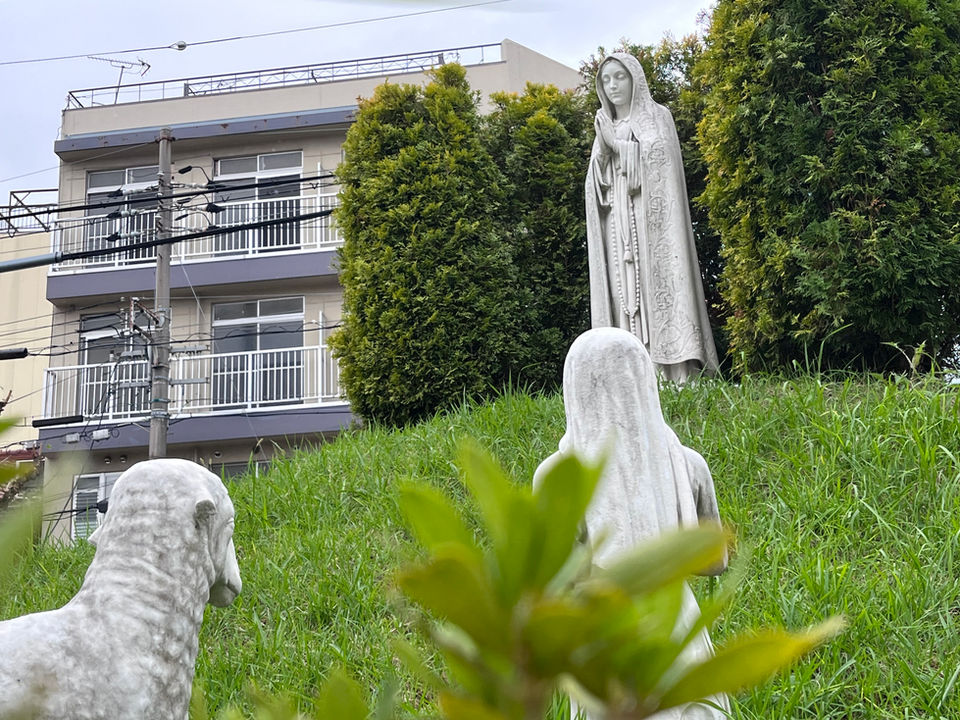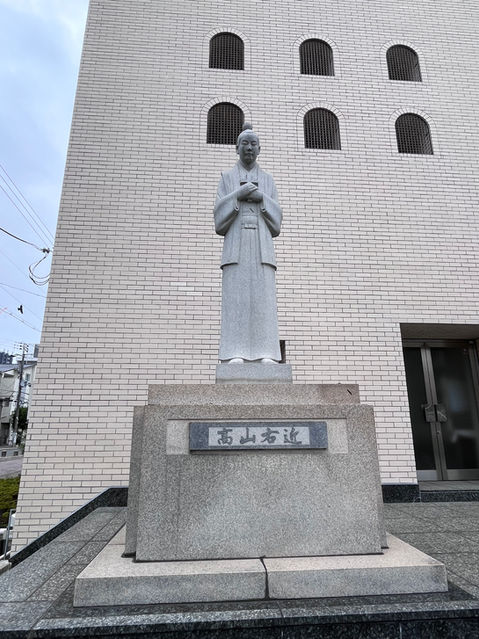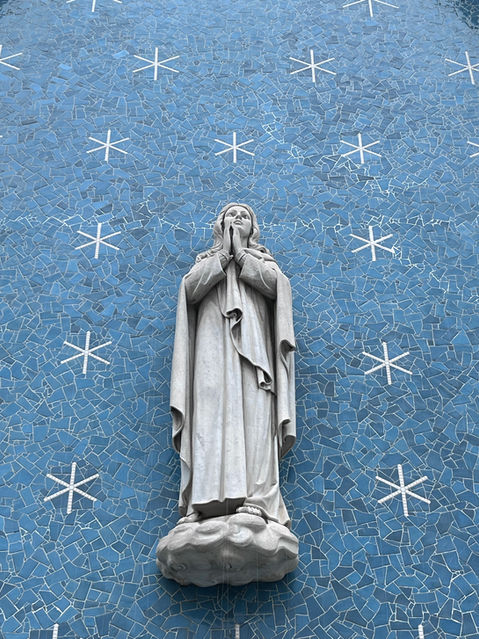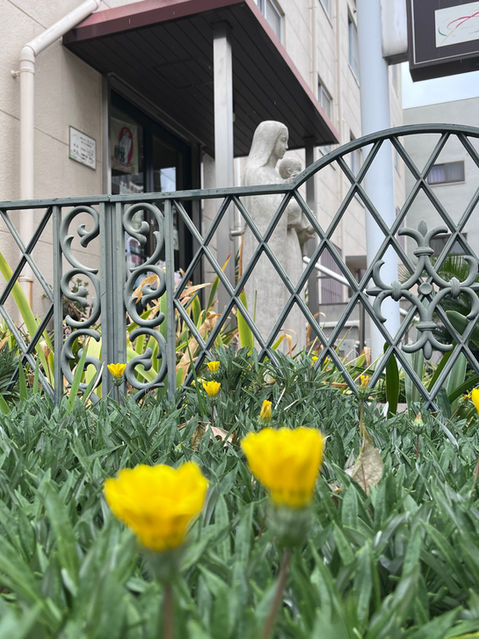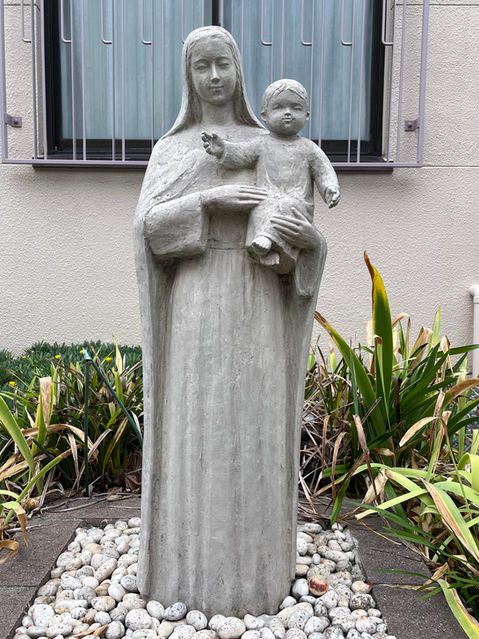Church
-
[History and overview]
In 1894, St. Agnes Church was built on this site and Tamatsukuri Church was founded, with Father Marie as the first pastor. That church was burnt down in the war. Following this, the church was rebuilt as St. Francis Xavier Church and in 1963 it was rebuilt as the Cathedral of St. Mary. To the north-west of the cathedral is the “Ecchu-well'', which is said to be the site of the former mansion of Hosokawa Ecchumori. There is a memorial stone monument commemorating Mrs. Hosokawa Gracia's death. The current St. Mary's Cathedral is a large cathedral built of steel-framed reinforced concrete, with a floor area of 2,450 square meters, reaching up to eaves at the height of 20 meters, topped by a bronze plated roof. The large mural at the front of the church, behind the altar, and the murals on the left and right sides were painted by the late artist Insho Domoto, a member of the Japanese Art Academy. Approximately 100 windows of various sizes, including ventilation windows, are stained glass windows created by Kohshu Habuchi of the Venice studios. The stained glass windows depict the birth and baptism of Jesus Christ, the life of the Virgin Mary, and, in the small cathedral, St. Francis Xavier delivering the message of the gospel to the Japanese people. The large cross hanging in the center of the cathedral, the statues of Our Lady and St. John in the 2nd floor nave, the 14 scenes of the Stations of the Cross lining the walls of the cathedral, and the statues of St. Agnes and St. Francis Xavier in the small chapel are wood carvings by the Austrian sculptor Lungartje. The stone statues of Blessed Justo Takayama Ukon and Mrs. Hosokawa Gracia, located at either end of the plaza in front of the cathedral, are the masterpieces of the Catholic sculptor Masayoshi Abe. The cathedral's pipe organ has 2,400 pipes.



